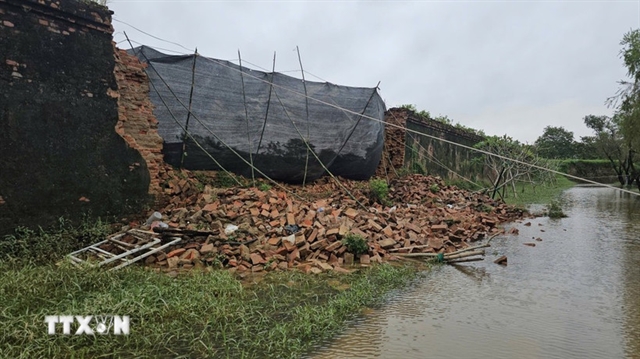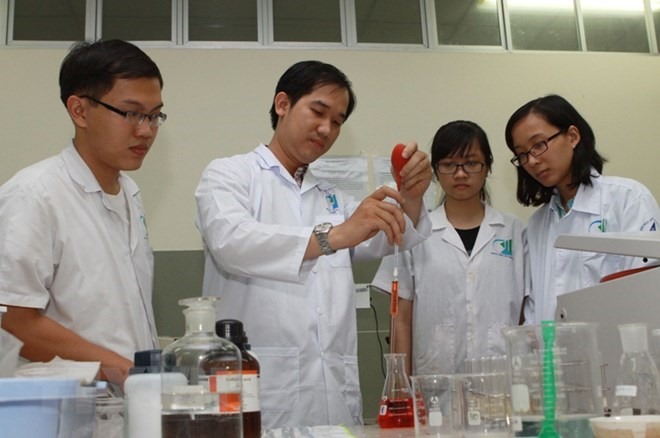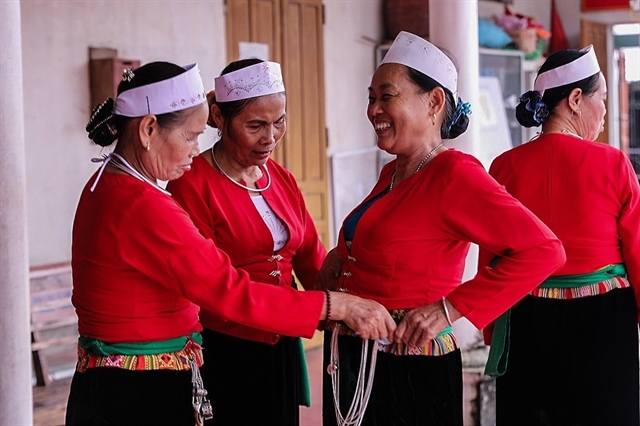 Society
Society

" />The Ministry of Education and Training has permitted more private universities to offer medical courses starting in 2018-19.
 |
| Medical students at a lab in a university in Việt Nam. —VNA/VNS Photo Phương Vy |
HCM CITY — The Ministry of Education and Training has permitted more private universities to offer medical courses starting in 2018-19.
Nguyễn Tất Thành University was the first in HCM City to get approval, and it will take in 50 students this year.
According to the university’s website, it is working with many city hospitals, including Chợ Rẫy, Paediatrics Hospital 2, Từ Dũ Obstetrics Hospital, Military Hospital 175, Thủ Đức Hospital, to get internships for its students.
This year the university has also added two other new faculties, medical physics and bio-medical engineering.
According to Prof Nguyễn Công Khẩn of the Ministry of Health’s Administration of Science, Technology and Training, the country faces a shortage of medical physicists even as many advanced techniques are being introduced in the country.
Medical physicists play an important role in image diagnosis, radiotherapy, and nuclear medicine.
Since 2014 the university has focused on research and setting up an international standard training programme for this.
In August 2017 the ministry green lighted it.
Nam Cần Thơ University in the Mekong Delta city of Cần Thơ will also begin to admit 60 students to its medical faculty. All high school graduates can apply, and admissions will be based on the results in the upcoming national high school examination.
Phan Châu Trinh University in Quảng Nam Province, Tân Tạo University in Long An, Duy Tân University in Đà Nẵng, the Hà Nội University of Business and Technology, and Võ Trường Toản University in Hậu Giang Province are also admitting students to their medical course.
According to the Ministry of Education and Training, the country had nearly 200 training facilities offering healthcare-related courses as of 2017.
Of them 24, including six private ones, offer courses in general medicine.
The number of doctors per 10,000 population in the country was eight last year. The Ministry of Health targets increasing the number to 10 by 2020.
According to experts, Việt Nam is no longer in the list of countries with an alarming shortage of doctors. However, the quality of training for medical workers remains a cause for worry, they admitted.
Trần Đức Thuận, deputy head of the Health Strategy and Policy Institute, told Nhân Dân (People) newspaper that medical training programmes and methodologies are changing too slowly.
Meanwhile, many advanced methods are being used in diagnosis and treatment, and this requires schools to update their training programmes frequently to remain abreast, he said.
Schools’facilities for training have failed to meet the training need, he said.
More and more medical universities have sprung up in recent times, making it a challenge and burden for hospitals to absorb the increasing number of interns, he added. —VNS




